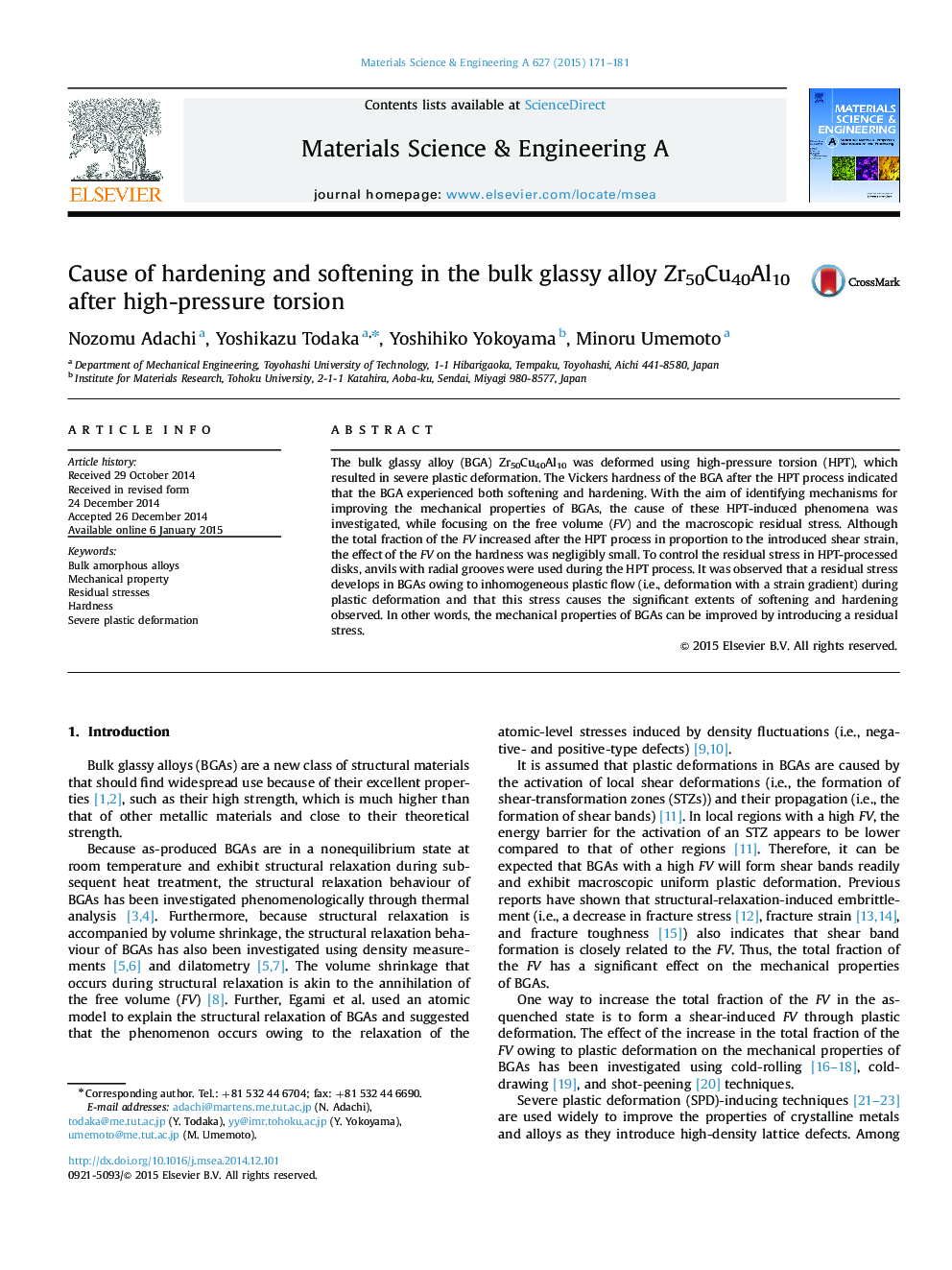| Article ID | Journal | Published Year | Pages | File Type |
|---|---|---|---|---|
| 1574528 | Materials Science and Engineering: A | 2015 | 11 Pages |
The bulk glassy alloy (BGA) Zr50Cu40Al10 was deformed using high-pressure torsion (HPT), which resulted in severe plastic deformation. The Vickers hardness of the BGA after the HPT process indicated that the BGA experienced both softening and hardening. With the aim of identifying mechanisms for improving the mechanical properties of BGAs, the cause of these HPT-induced phenomena was investigated, while focusing on the free volume (FV) and the macroscopic residual stress. Although the total fraction of the FV increased after the HPT process in proportion to the introduced shear strain, the effect of the FV on the hardness was negligibly small. To control the residual stress in HPT-processed disks, anvils with radial grooves were used during the HPT process. It was observed that a residual stress develops in BGAs owing to inhomogeneous plastic flow (i.e., deformation with a strain gradient) during plastic deformation and that this stress causes the significant extents of softening and hardening observed. In other words, the mechanical properties of BGAs can be improved by introducing a residual stress.
